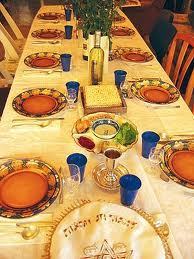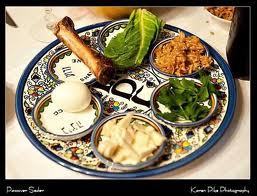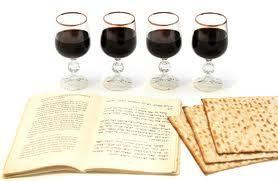PASSOVER FEAST
PASS THE HORSERADISH: A FEAST NOT TO BE PASSED OVER
Holidays are often associated with the special foods that we share together. Passover is one of these special events for me. I have fond memories of seders at our house where I grew up and of the various relatives who attended. At the time, my mother kept kosher, so the night before found us going through the house with a feather and a candle to search out any remaining bread crumbs (which my mother had placed there earlier). I don't remember if she actually collected these in a cloth and burned them or just threw them out, but the ritual retains a place in my mind. She'd put out two entirely new sets of china dishes just for Pesach, one for dairy and one for meat.
Oh—maybe this is why I have four sets of good china?
Anyway, delicious aromas would fill the kitchen the next morning: chicken soup boiling in a large stockpot on the gas stove, brisket roasting, sweet potatoes baking. I'd help set the table and put the Haggadahs around, the prayer books that tell the story of the slave exodus from Egypt. My mother made up individual dishes of salt water to dip our hard boiled eggs in, and she roasted the symbolic bone herself for the seder plate.
Finally the hour would come when we all sat around the table, dressed for company and mouths watering for the feast that would follow. My uncle conducted the service, each person taking a turn reading a paragraph at a time, telling the story of Moses and the ten plagues that beset the Pharaoh's people. We got to dip parsley in salt water as part of the ritual and ate Hillel's sandwiches, a forkful of charoses and a bit of maror (bitter herbs served as horseradish) in between pieces of matzoh. I could eat the charoses—chopped apples, walnuts, and sweet grape wine—by itself. Finally, we came to the break when we could eat. All right!
Usually I ate my hardboiled egg first, slicing up chunks and dipping it in the salty water. The egg symbolizes eternal life. Next came a plate of gefilte fish artfully arranged on a bed of lettuce, with beet horseradish on the side. Matzoh ball soup was up next. Oh, so good. And then we come to the main dishes, brisket or roast chicken with tzimmes—a mashup of cooked sweet potatoes, carrots, and prunes—and a green vegetable. Some people might make matzoh or farfel stuffing. I can't remember if we ate this or not. Dessert had to be flourless so this often consisted of macaroons, although nowadays you can buy almond cookies and cakes at the grocery store. I'm also fond of the candied "fruit" slices available at this time of year.
Stuffed to the gills, so to speak, we finished the seder service. I'd watch carefully Elijah's cup of wine to see if the prophet drank from it when we opened the door for him. He must get pretty drunk by the end of the night, considering how many households he has to visit. We're not immune, either, since we have to keep refilling our wine glasses (grape juice for kids) so as to meet the requirement of drinking four glasses of wine. Mostly this means topping off our glasses, but no wonder one of the Four Questions always asked by the youngest child is, "Why do we recline on this night and on no other night?" It's because we're too full and tipsy to move!
Just think, if you're religious or have a lot of friends, you can do it again on the second night. Oy, vey. Hold the diet until next week!
For Jewish recipes, go to:
http://jewishrecipes.org/
http://www.easyjewishrecipes.com/
http://www.jewishrecipetrader.com/
What are some of your food memories from either Easter or Passover?

Nancy's Notes from Florida
- Nancy J. Cohen's profile
- 667 followers






